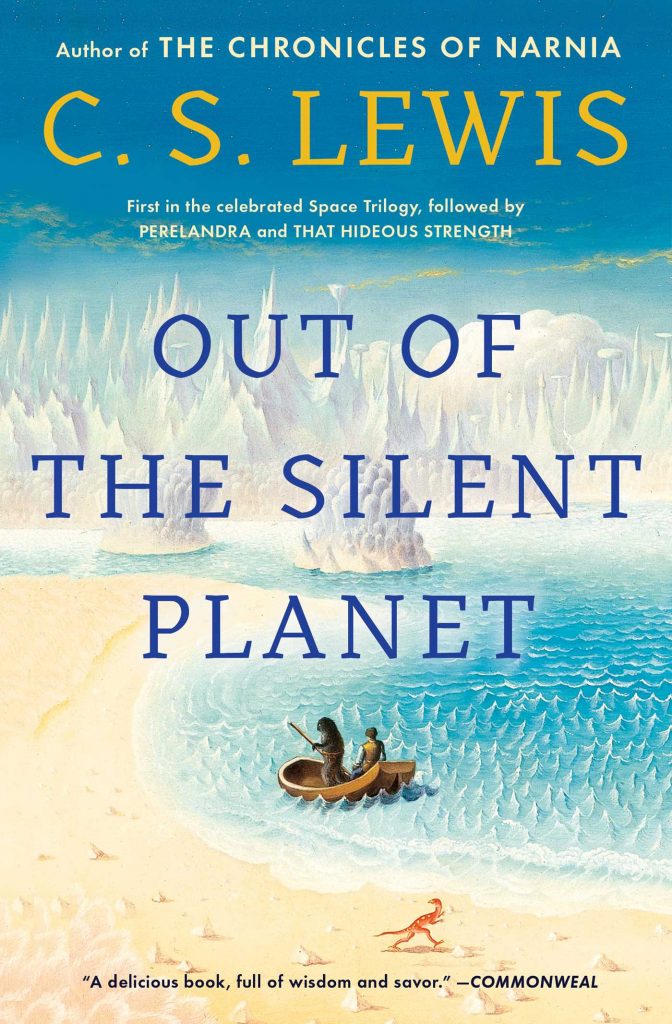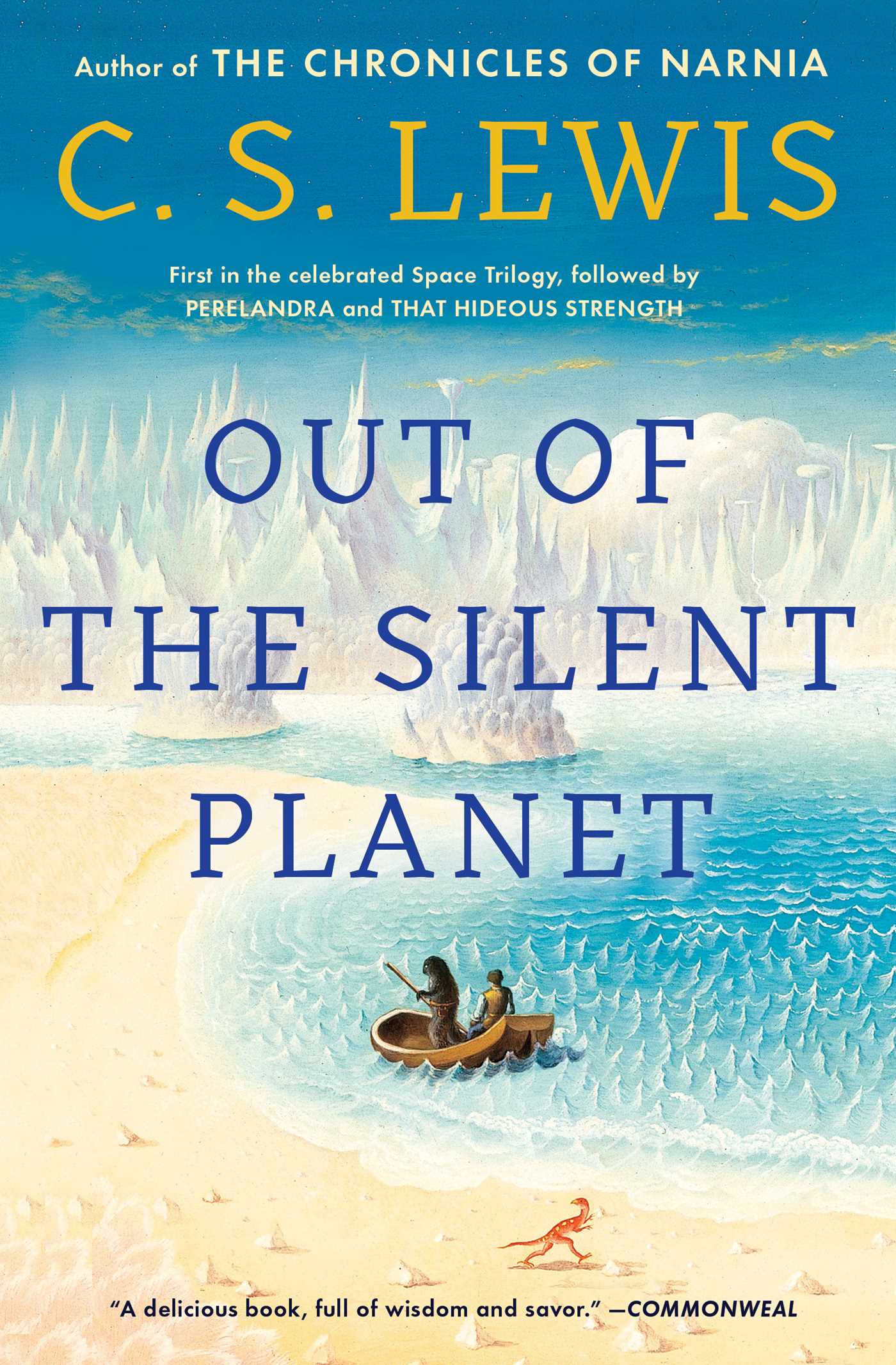Hear me out. This isn’t just a book review of Chronicles of Narnia.
Speaking of which, if you haven’t read Chronicles of Narnia, go read it this instant!
…
Did you read it? Good. Back to our regularly scheduled review.
As everyone knows, C.S. Lewis is famous for his fantasy series, Chronicles of Narnia, and his theological books such as The Screwtape Letters and Mere Christianity. But did you know that he’s written a sci-fi? Did you know he’s written a myth retelling?
That’s right, C.S. Lewis has a lot more variety than people credit him for. And the undiscovered books of C.S. Lewis are like diamonds in the rough, just waiting to be found. Perhaps why these books aren’t as popular as the rest is because they are not much like Chronicles of Narnia. Once an author establishes a certain image, branching out into other genres doesn’t often end well.
But even though these books aren’t the same as Narnia, they’re still magnificent and profound, like every C.S. Lewis novel.
Out of the Silent Planet
The first book in C.S. Lewis’s acclaimed Space Trilogy, which continues with Perelandra and That Hideous Strength, Out of the Silent Planet begins the adventures of the remarkable Dr. Ransom. Here, that estimable man is abducted by a megalomaniacal physicist and his accomplice and taken via spaceship to the red planet of Malacandra. The two men are in need of a human sacrifice, and Dr. Ransom would seem to fit the bill. Once on the planet, however, Ransom eludes his captors, risking his life and his chances of returning to earth, becoming a stranger in a land that is enchanting in its difference from Earth and instructive in its similarity.

A strange tale reminiscent of H.G. Wells, yet unlike Wells in its purity and God-edifying nature, Out of the Silent Planet is C.S. Lewis’s first foray into space with a main character who seems much like himself, or perhaps more like his best friend, Tolkien. Dr. Ransom survives through his ability to pick up languages, bonding with a world far different from our own to survive and find a way back home.
After reading The Time Machine and finding myself scarred by its debasing view of humanity and evolution, I was rather put off by old science fictions. But C.S. Lewis drew me right back in.
That is the delight of Tolkien and Lewis in the face of other writers of their time. Theirs was an age where most authors treated humanity with disrespect, thinking them only intelligent animals, nothing more. Tolkien and Lewis see the souls inside each of us and treat those souls for what they are, human people who God made in His image to glorify Him.
Content Warnings:
Moderate violence.
Ratings:
Appropriate content: 4.5/5
Story construction: 5/5
Writing skill: 5/5
Ethics: 5/5
Other Information:
Christian: Yes
Point of view: Third person limited
Tense: Past
Romance: No
Series: Yes
Age recommendation: 12+
Till We Have Faces (recommended 18+)
Fascinated by the myth of Cupid and Psyche throughout his life, C.S. Lewis wrote this, his last novel, to retell their story from the perspective of Psyche’s sister, Orual: “I saw well why the gods do not speak to us openly, nor let us answer . . . . Why should they hear the babble that we think we mean? How can they meet us face to face till we have faces?”
Lewis provides an engaging retelling of one of the most popular myths from antiquity with what the Saturday review called, “new meaning, new depths, new terrors.” With his trademark insightfulness, Lewis reminds us of our own fallibility and the role of a higher power in our lives.

Any middle grade or even younger YA readers, I would warn to put off this book a little while. While C.S. Lewis edifies God with everything he writes, this book deals with things children shouldn’t be exposed to.
A profound and heartbreaking book, Till We Have Faces tells the story of a girl just trying to protect her sister, burdened with the ugliness that everyone assures her she possesses. It’s an interesting read, because the main character believes in a collection of deities who appear to be real. But of course C.S. Lewis led it right back around to the only true God.
However, enter this book with the foreknowledge that it mentions sex. The book does, after all, tell about a girl who is given in marriage. Each mention is brief and never is there a scene that actually shows anything, but it is very clearly laying with another that is discussed.
Content Warnings:
Discusses sex, a few swear words.
Ratings:
Appropriate content: 3.5/5
Story construction: 4.5/5
Writing skill: 5/5
Ethics: 5/5
Other Information:
Christian: Yes
Point of view: Third person limited
Tense: Past
Romance: Yes
Series: Yes
Age recommendation: 13+
All in all, C.S. Lewis’s books are both enchanting and steeped in the truth of God, leaving the reader profoundly impacted by the truths these fantasies are based on. I highly recommend both these novels to an older audience.
Don’t forget to subscribe for your free short story!

Leave a Reply